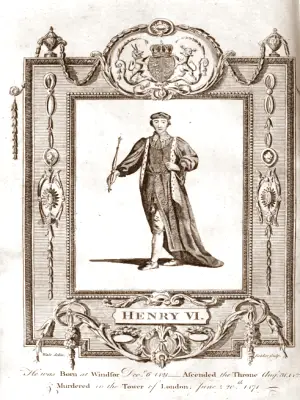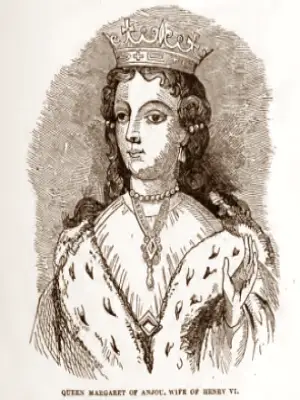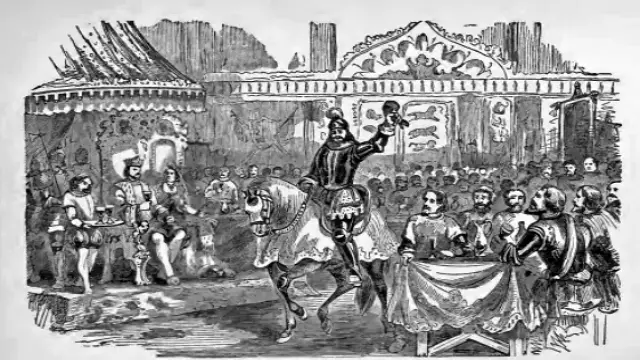King Henry V is often seen as a ‘Good King’. He is famous for winning the Battle of Agincourt and for inspiring lines from Shakespeare, like:
- “Once more unto the breach, dear friends, once more.”
- “Cry God for Harry, England, and Saint George.”
- “We few, we happy few, we band of brothers.”
His son, Henry VI, also had the potential to be a good king. He was kind and religious, but he struggled with mental health issues throughout his life.
Early Life of Henry VI
Henry VI became king when he was just nine months old, making him the youngest monarch in English history. During his childhood, his uncles, John and Humphrey, ruled in his place. At sixteen, Henry took control, but his court was influenced by favorites.

Henry was the great-grandson of King Edward III. Another descendant, Richard, Duke of York, was named as Henry’s heir. However, York was sent to govern Ireland and was kept away from the court.
In 1445, Henry married Margaret of Anjou, a political move aimed at ending the Hundred Years War with France. They had one son, Edward, in 1453.
Unrest and Downfall
Henry’s favorites, the Dukes of Somerset and Suffolk, caused unrest. Suffolk was particularly disliked, leading to a campaign against him. Henry had to send him into exile, but Suffolk was killed when his ship was intercepted.
Somerset mishandled military campaigns in Normandy, losing all the land gains made by Henry V. By the end of Henry VI’s reign, Calais was the only English territory left in France.
In 1452, Richard of York returned from Ireland, aiming to end the corruption in Henry’s court. After some struggles, he became regent in 1454 when Henry’s mental health declined. York gained support from Richard Neville, the Earl of Warwick.

When Henry regained his sanity later that year, tensions rose. Warwick and other nobles backed York’s claim to the throne, leading to the War of the Roses.
The War of the Roses
The first battle, the First Battle of St Albans, ended in victory for York. He captured Henry VI and imprisoned him in the Tower of London. Despite being named Henry’s successor, York never became king. He married Cecily Neville, and they had eight children. Their eldest son, Edward, became King Edward IV after York was killed at the Battle of Wakefield in 1460.
Meanwhile, Margaret of Anjou sought to reclaim the throne for her husband and son. When Edward IV clashed with Warwick and his brother, George, Duke of Clarence, Margaret allied with them. After Warwick’s daughter married her son, Margaret supported Warwick’s campaign against the Yorkists.
The Return of Henry VI
In 1470, Edward IV was forced into exile, and Henry VI returned to the throne. However, his mental health had worsened, and Warwick and Clarence effectively ruled for him. Margaret and Anne were in France but returned to find that Edward IV had reconciled with Clarence and that Warwick had died at the Battle of Barnet.
Margaret and her son fought against the Yorkists at Tewkesbury, where Edward was killed, marking the only heir presumptive to die in battle. Henry VI was imprisoned again, and Edward IV resumed his reign.
Henry died in the Tower in 1471. Some say he died of grief after hearing about his son’s death, while others believe he was murdered on Edward IV’s orders.
The Rise of Richard III
Richard, Duke of Gloucester, later married Anne Neville, the widow of Edward of Westminster. After Edward IV’s death, Richard imprisoned Edward’s sons in the Tower, usurped the throne, and became King Richard III.
Conclusion
The story of King Henry VI is filled with turmoil, mental health struggles, and political intrigue. His reign marked a significant period in English history, leading to the War of the Roses and the rise of powerful figures like Richard of York and Richard III.
If you’re feeling lost among the many Henries, Richards, and Edwards, you’re not alone. The history of this era is complex, but it’s essential to understand the impact these figures had on England’s future.

